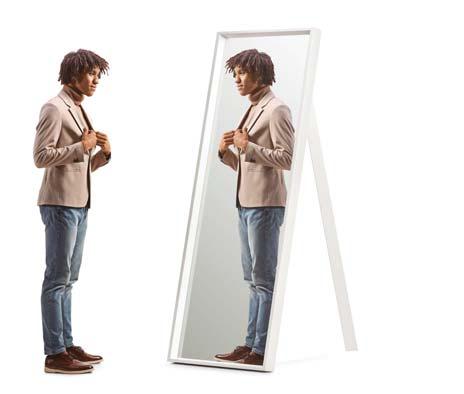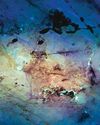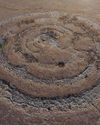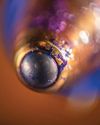MIRROR PHYSICS

The first mirrors date to around 6,000 BCE, but people have used reflections in natural features such as puddles for many thousands of years. When you look into a mirror, the reflection looking back at you is a life-size, exact visual copy. The angle at which you face the mirror determines what reflection you see - just as if you were to throw a ball at a wall, the angle at which it returns is equal to the angle it hits the wall at. Because the sides of an object line up exactly with the sides of the reflected image, the mirror image is a horizontally flipped version of reality. Your brain interprets the mirror image of you as another person who has turned to face towards you. When you lift your left arm, for example, it appears as if the mirror image of you is raising their right.
Light only behaves in this way when it interacts with a smooth, reflective surface.
Dit verhaal komt uit de Issue 200 editie van How It Works UK.
Start your 7-day Magzter GOLD free trial to access thousands of curated premium stories, and 9,000+ magazines and newspapers.
Al abonnee ? Inloggen

Dit verhaal komt uit de Issue 200 editie van How It Works UK.
Start your 7-day Magzter GOLD free trial to access thousands of curated premium stories, and 9,000+ magazines and newspapers.
Al abonnee? Inloggen

WHY ARE GEMS DIFFERENT COLOURS?
Unearth the gemstone chemistry that results in a spectrum of decorative stones

HOW TRAIN TRACKS ARE LAID
This feat of engineering keeps long carriages in-line and fixed to the ground

THE WORLD'S WEIRDEST ISLANDS
Travel across the globe with us to discover unique and beautiful lands dotted across oceans and waterways

The 'Stonehenge' in the Golan Heights may not be an astronomical observatory TOM METCALFE
An ancient and enigmatic stone circle in the Middle East may not be a prehistoric astronomical observatory after all.

INSIDE A BALLPOINT PEN
Discover the mechanism that gives this everyday item the power to write

WHAT ARE HEADACHES?
From shooting sensations to dull aches, we explore the many causes of pain around the brain

IS THIS THE HUMAN OF TOMORROW?
HOW WIRES AND CIRCUITS ARE MINGLING WITH BLOOD VESSELS AND NERVES TO CHANGE THE COURSE OF HUMAN EVOLUTION

THE HUNT FOR FARAWAY MOONS
Astronomers are looking for moons outside our Solar System that may have even more chance of hosting life than the planets they're orbiting

HOW THATCHED ROOFS ARE BUILT
Learn all about this historic building method that masterfully tops roofs with layers of dry vegetation
